What to wear for cycling in Spring
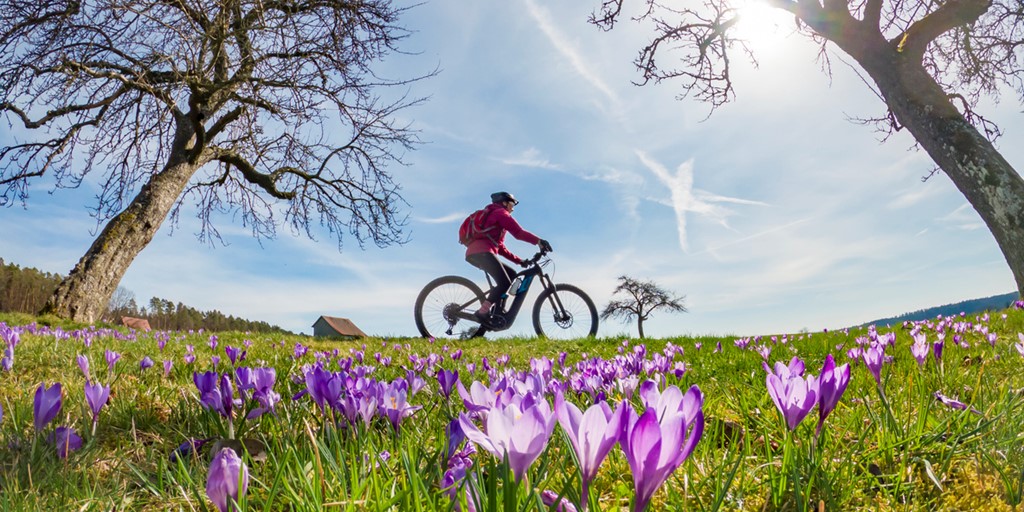
Cycling in the springtime usually means longer days and warmer weather—but thanks to the unpredictable UK climate, knowing what to wear when cycling in spring can be tricky.
With some mornings starting off bitterly cold and the day potentially developing a heatwave by lunchtime, you’ll need clothing that can adapt to changing temperatures and conditions. There’s nothing worse than having thick layers to combat that morning frost but then finding you’re overheated when the sun comes out.
Without having the correct clothing, you may hinder your performance. Too cold, and you’ll want to head back early; too warm, you’ll need to take in more fluids to combat dehydration from sweating—either way, picking the wrong kit can make your ride uncomfortable.
To ensure you can get the most out of your cycling, we’ve outlined our top picks for what to wear for cycling in spring.
Contents Table
Base Layers
Jerseys And Softshell Jackets
Shorts
Gilets
Arm, Leg And Knee Warmers
Oversocks And Socks
Buffs
Springtime Caps
Windproof Gloves
Base Layers
Starting with your base layers, these will be your main cheat code to surviving the dramatic spring weather changes while out cycling.
As these layers come in short or long sleeves and are very lightweight, you’ll be able to mix and match accordingly for the weather forecast.
You can double up your short sleeve base layer with a short sleeve jersey and arm warmers—this way, if the temperature rises on your ride, you can easily whip off the arm warmers and store them in the back pocket of your jersey.
A base layer can keep you dry and prevent you from getting too sweaty if you push yourself during your springtime ride.
Merino wool base layers are quite popular if you’re looking for a more natural fabric, but you can also find bamboo materials. With merino, you’ll be covered in a wide range of temperatures as it’s available in different ‘weights’ of fabric—it also doesn’t get smelly if you get a bit sweaty.
If artificial fibres are more up your street, then a base layer made from materials such as polypropylene are what you’ll be looking for. They work well at not absorbing sweat and are light in weight, so great for those warmer days. However, base layers made of artificial fibres are more likely a bit on the smelly side after being on a sweaty ride. So if you’re looking to wear your base layers on subsequent days, a natural merino fibre might be better.
Jerseys And Softshell Jackets
Your choice of jersey is going to dictate the warmth of your outfit.
If the day looks like a sunny one, you can go for something short sleeve and windproof—if you’re worried about it being a bit chilly when you start, invest in a thermal version and undo the zip as it gets warmer.
If you’re going on a cooler spring ride, you can opt for a lighter in weight and breathable jersey with long sleeves and team it up with some of the other layers we’ve suggested.
You may want to opt for carrying on wearing your softshell jacket from winter through to spring. If you don’t have one, they’re a great investment to wear over your jersey, which can add a light layer during this season. Some of these jackets are also windproof, which adds extra protection.
Related: The 7 Best Waterproof Cycling Jackets For Men
Shorts
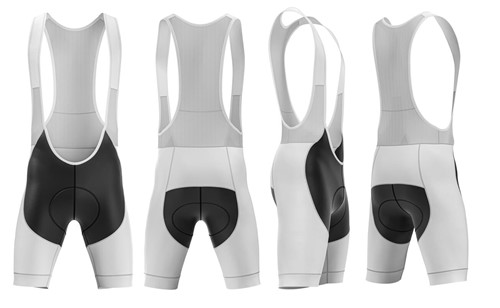
If you’re laying up on top, shorts give you the option to feel a bit freer and airier on the bottom.
Though you might think shorts are catered a little more towards the summer months, there are various options to ensure your outfit matches whatever the spring weather may throw at you.
If it’s looking like a warm ride, you’ll probably want to opt for simple padded shorts, or bib shorts, as you may do in summer.
However, if it’s colder, a few combinations mix things up.
Considering the amount of work your knees will be doing, you’ll need to ensure your joints and tendons are protected from injury. If you’re heading out in chillier temperatures, you’ll want to keep your knees covered—to do so, you could wear one of the following options:
Bib shorts, with a pair of leg or knee warmers
Bib knickers that extend below the knee
Three-quarter padded shorts
You may want to opt for thermal bib shorts for those awkward in-between days. Though only a handful of manufacturers offer them, they could be the key to cycling in spring weather. Constructed from slightly warmer fabric, they feel just like wearing a regular pair of bib shorts but add an extra layer of insulation against the cold.
Related: The Best Women’s Cycling Shorts For 2021
Gilets
If your jersey just doesn’t cut it against those chilly spring mornings, you may find a gilet does the trick.
Imagine a lightweight shell jacket and then remove the arms—there you have the humble gilet. It is probably one of the most versatile pieces of kit when you’re going from cold to hot so quickly on your ride, as it can add an extra windshield layer to your torso but not make your arms don’t get overly warm.
Usually made from a thin breathable, wind-resistant material, you can pair your gilet with a short sleeve jersey on warmer days or a long sleeve jersey on cooler ones—so you have plenty of options to suit your needs on each ride.
As well as being practical for the spring weather, they’re easily removed and curled up into a tiny package that can be stored in your jersey pocket without too much fuss.
Arm, Leg And Knee Warmers
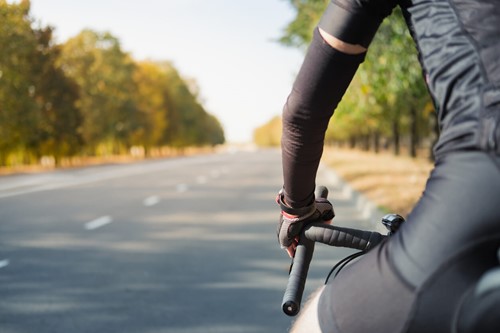
Though the arm, leg and knee warmers seem like simple accessories, they are the key to creating a flexible wardrobe when trying to work out what to wear for cycling in spring.
The Lycra warmers help you adapt your outfit to any weather occasion by adding an extra layer to help keep your exposed body parts shielded from the elements. However, they can be quickly and easily whipped off and stored in either a pocket or a small bike bag.
You can purchase warmers made from wool if you’re looking to increase the warmth on your rides.
The warmers come in a variety of colours. If you’re looking to jazz up your outfit, you could pick a coloured or patterned pair—check out the variety of choices on Stolen Goat. But if you’re looking for something a little more simple and classic, Pactimo offer some great plain black ones.
If you’re looking to invest and want to be savvy, arm, leg and knee warmers can also be doubled up and used for winter riding too—they’re a great layering piece, what more can be said?
Oversocks And Socks
With less need to keep your feet insulated, spring allows you to pack away your thick overshoes and go for something lighter like an oversock made from thinner and more breathable fabrics.
If you want to keep the wind from blowing through the vents in your shoes, you can opt for a windproof oversock, or if you’re looking to keep all the dirt off your shoes, a normal version will suffice.
If you’re completely over oversocks now you’re into spring, you can opt for toe warmers, which only cover the front part of your shoe, with the rest exposed.
Cycling socks will also help add a layer of protection from the elements. Many are specially made to keep your feet dry and at a comfortable temperature while riding—they are also created to be a better fit than a regular sock and can provide extra support to the balls of your feet.
Buffs
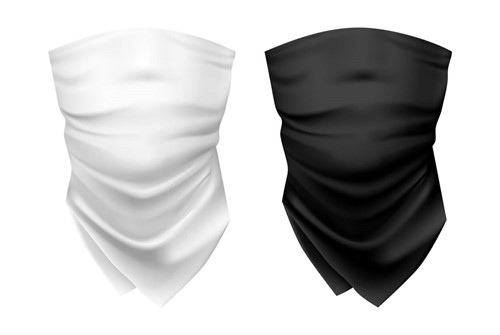
If you’re looking for something simple and small that’ll keep you warm but is also easy to whip off when the weather heats up, the buff does it all.
Acting as a neck warmer, the buff adds a layer of protection to your neck and can be pulled up to cover your ears and face keeping off the chill. It also allows you to be versatile in your jersey style, enabling you to pick any collar height.
As well as being a key piece of kit for the springtime, a buff is quite cheap to purchase and usually comes in a variety of funky patterns and colours—keeping you warm and stylish at the same time.
Springtime Caps
Spring weather can be unpredictable and sometimes on the chillier side. To protect your head from the elements, you may want to upgrade your usual traditional cotton cycling cap for one that is wind and waterproof.
Not only is the springtime cap a great way to keep you warm without adding extra bulk to your outfit, but you can also match the colour or print with your buff to keep you looking on-trend as you ride.
These caps can be tricky to get hold of, but brands such as Sportful, Stolen Goat and Sealskinz.
Windproof Gloves
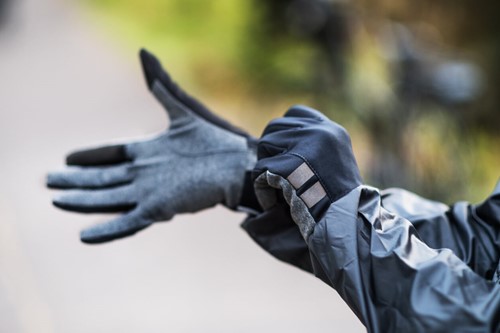
Windproof gloves may seem like an extra, but you can’t underestimate the sheer awfulness of cold hands—especially on a long ride.
Even though spring often brings sunshine, the slight chill in the air can be intensified as you whip around your route on your bike. With highspeed winds lashing at your fingers, it’s not long before they can feel like they’re frozen!
Mitts that fold back into fingerless gloves are a great option for spring—check out this Amazon pair that won’t break the bank and are still super functional.
Related: The Best Women’s Cycling Gloves For 2021
Specialist cycling insurance from Cycleplan
Now you’ve invested some time into planning what to wear for cycling in spring, you’ll want to make sure your bike and accessories are properly protected.
This is where we can help. At Cycleplan, our specialist cycling insurance enables you to be protected from injury or claims that might be made against you and your bike in the event of theft, damages, or if it’s stolen (providing you report it to the police within 24 hours).
We also have equipment cover that will ensure your bike and accessories are kept safe up to the value of £30,000. We also provide additional protection such as personal accident cover, public liability, and more.
Click here to learn more about our specialist cycling insurance, and get an instant online quote today.







